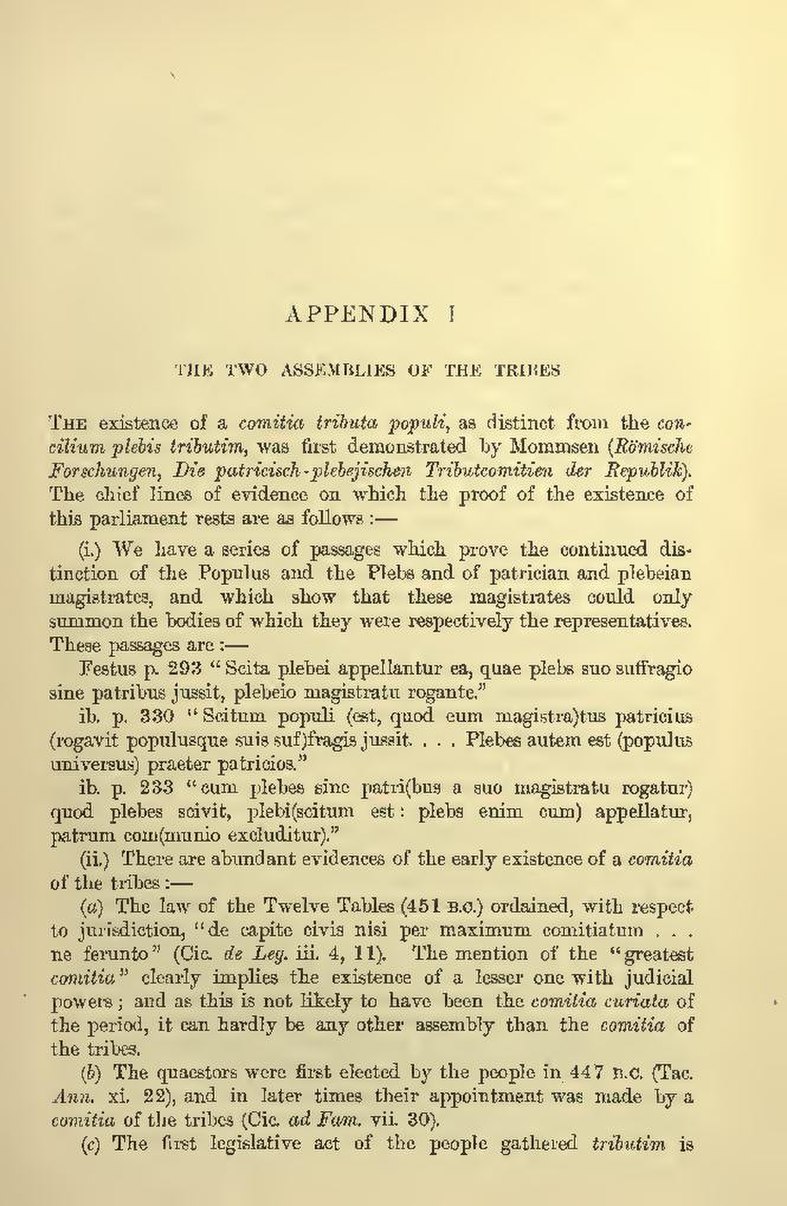APPENDIX 1
THE TWO ASSEMBLIES OF THE TRIBES
The existence of a comitia tributa populi, as distinct from the concilium
plebis tributim, was first demonstrated by Mommsen (Römische
Forschungen, Die patricisch-plebejischen Tributcomitien der Republik).
The chief lines of evidence on which the proof of the existence of
this parliament rests are as follows:—
(i.) We have a series of passages which prove the continued distinction of the Populus and the Plebs and of patrician and plebeian magistrates, and which show that these magistrates could only summon the bodies of which they were respectively the representatives. These passages are:—
Festus p. 293 "Scita plebei appellantur ea, quae plebs suo suffragio sine patribus jussit, plebeio magistratu rogante."
ib. p. 330 "Scitum populi (est, quod eum magistra)tus patricius (rogavit populusque suis suf)fragis jussit. . . . Plebes autem est (populus universus) praeter patricios."
ib. p. 233 "cum plebes sine patri(bus a suo magistratu rogatur) quod plebes scivit, plebi(scitum est: plebs enim cum) appellatur, patrum com(munio excluditur)."
(ii.) There are abundant evidences of the early existence of a comitia of the tribes:-
(a) The law of the Twelve Tables (451 B.C.) ordained, with respect to jurisdiction, "de capite civis nisi per maximum comitiatum . . . ne ferunto" (Cic. de Leg. iii. 4, 11). The mention of the "greatest comitia" clearly implies the existence of a lesser one with judicial powers; and as this is not likely to have been the comitia curiata of the period, it can hardly be any other assembly than the comitia of the tribes.
(b) The quaestors were first elected by the people in 447 B.C. (Tac. Ann. xi 22), and in later times their appointment was made by a comitia of the tribes (Cic. ad Fam. vii 30).
(c) The first legislative act of the people gathered tributim is
